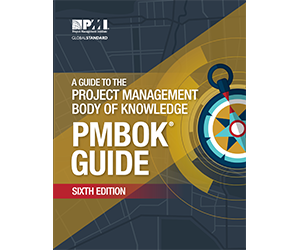
Many projects and organizations purchase external goods, services, consultants, contractors and suppliers in a process called procurement. Although it’s a very efficient and capable way to deliver project work, it has its own limitations that must be recognized in order for the procurements to go smoothly.
A procurement strategy establishes the methods and procedures which govern the purchasing activities. It has four parts:
- Delivery methods
- Contract payment types
- Procurement phases
- Economic Analysis
Delivery Methods
There is no one-size-fits-all method to structuring contracts. Each method has its own positives and negatives, hence they must be looked at individually to ensure the right one is chosen.
Also, there are several options regarding what work to include in a contract.
- Turnkey, as the name suggests, means that the contractor performs all design and construction functions, and delivers the project to the owner in a condition that’s ready to “turn the key.”
- Design Build is similar to turnkey, except that the contractor is subject to approval of their design prior to construction. This gives the owner the chance to change something to suit their purposes prior to receiving the completed work.
- Design Bid Build (DBB) is a very traditional method in the construction industry. It involves hiring a design consultant (engineer or architect) who performs the design work and produces a separate contract for the construction work. The owner is left with two contracts, but the engineer or architect manages the construction process hence the owner needs only to deal with the architect/engineer. The architect or engineer functions as a project manager as well as the technical design team.
- Design Build Operate (DBO) is similar to Design-Build except that the contractor operates the building (work) for a specified period of time before turning it over to the owner.
- Build Own Operate Transfer (BOOT) are similar to DBO with the exception that the contractor maintains ownership throughout the period prior to the transfer.
Most projects are delivered through the Design Bid Build (DBB) method, therefore this is the first method to consider unless there is a good reason not to.
- If the contractor should perform the design work, choose the Design Build method. This speeds up the process because the design and construction are under one roof, but the contractor is motivated to produce a minimal design that will save them money to construct.
- Although rare, if the desire is to have the contractor operate or outright own the product after construction, a DBO or BOOT is used. The DBO method maintains ownership with the owner during the operational period, while the BOOT method gives the contractor ownership until the transfer date.
Contract Payment Types
 Likewise, a strong procurement strategy must identify the types of contracts that are used to deliver projects. These should be considered carefully, because choosing the wrong contract type for the wrong project is likely to result in significant contract management headaches (and costs).
Likewise, a strong procurement strategy must identify the types of contracts that are used to deliver projects. These should be considered carefully, because choosing the wrong contract type for the wrong project is likely to result in significant contract management headaches (and costs).
- Fixed Price
Also called lump sum, this contract type requires the contractor to quote the work as one price for the entire scope of work. The contractor assumes all of the risk of project changes, and this is priced into their bid. - Cost Plus
This type of contract has the owner reimbursing the contractor for their time and expenses (cost), with some form of separate fee for profit (plus). The first (cost) is invoiced on a time and materials basis, and the second (plus) as a lump sum or percentage complete. There are several variations, which essentially involve using the second (plus) used as an incentive to motivate the contractor to minimize the first (cost) portion. That is, the second (plus) portion contains adjustments based on efficiency metrics or project milestones achieved. For example, a contractor might quote $80,000 for their costs and $20,000 for the fixed fee. If the contractor finishes the project with $90,000 in costs plus the $20,000 fixed fee, the final contract value will be $110,000. The purpose of this contract type is to place some of the risk of project change on to the owner. This serves to reduce the bid prices, that is, the project changes might still happen but the risk is not priced in up front. - Time and Materials
Similar to cost plus, except that there is no separate fee for profit. It’s not that the contractor is expected to have no profit, rather the profit is embedded within unit rates. For example, if a contractor bids $100,000 on a time and materials basis, the bid would contain the applicable unit rates and expected hours to perform the work. If the final number of hours results in $110,000, the full amount is invoiced (subject to customary maximum negotiated limits). The invoice would contain, say, $150/hr for an excavator which contains the organization’s profit embedded within it. This is common in professional services contracts where a person who’s take home salary is $40/hr is charged to the client at, say, $120/hr, thereby containing all of the business’ costs as well as profit embedded within it.
Procurement Phases
 The procurement strategy can include information of the various phases that occur throughout the procurement process. There are six phases in the procurement timeline:
The procurement strategy can include information of the various phases that occur throughout the procurement process. There are six phases in the procurement timeline:
- Planning determines when procurements will occur and what their completion dates will be in relation to each portion of the project work. A Procurement Management Plan is specified by the Project Management Body of Knowledge (PMBOK) and provides a road map for the other procurement phases.
- Development of procurement documents should not be underestimated as statements of work, terms of reference, request for proposals, and tender advertisements need to be professionally developed and receive the appropriate amount of review and approval.
- The tendering period is when the contractors prepare their bids. This usually ranges from 2 – 4 weeks.
- Tender evaluation: Some contracts choose the lowest price, in which case it the winner is usually chosen immediately. Others, however, require days or even weeks to evaluate the bids, especially when price is not the only factor.
- Sometimes a pre-qualification round seeks to develop a qualified sellers list based on qualifications rather than price, for example past experience, project team, and so forth. In this case, the process moves back to the bid documents stage for the bidding.
- Signing of contracts usually requires another 1 – 3 weeks, especially in large organizations. This takes place after the contract is awarded and adds to the contractor’s required time to complete the work.
From someone who has spent alot of time on procurement, I can assure you that the logistics of contracting require that procurement timelines need to be considered within the overall project schedule.
In addition, most contracts are paid based on progress to date. This is a factor that can cause headaches for both parties even if all of the technical work is being performed satisfactorily. Two questions should be answered within the procurement strategy:
- How will progress be measured?
- Who will measure and finalize it?
Economic Analysis
The use of an external vendor is inherently capital intensive and usually consumes a significant portion of the project budget. For that reason, the procurement strategy should make use of the three main capital budgeting methods:
- Net present value (NPV)
Project expenditures and future revenues are “discounted” to the present value using a discount rate, which takes into account the time value of money as well as the opportunity cost embedded within the organization. - Internal Rate of Return (IRR)
The rate of return achieved by the project, which can be compared to stock market returns or other projects competing for limited funding. - Payback period
The length of time in which the full investment in the project is returned back to the project (its breakeven period).
Most projects involve a large, up front investment followed by small, regular returns.
If these returns are intangible, for example a road construction project, a cost benefit analysis is a great way to justify the project and achieve buy in from management.
Procurement Strategy in the PMBOK
 In the Project Management Body of Knowledge (PMBOK Guide) the development of a procurement strategy is an output of the Plan Procurement Management process within the Procurement Management knowledge area.
In the Project Management Body of Knowledge (PMBOK Guide) the development of a procurement strategy is an output of the Plan Procurement Management process within the Procurement Management knowledge area.
The procurement strategy is a part of the procurement management plan, which is used as the basis for project control within the Control Procurements process.






